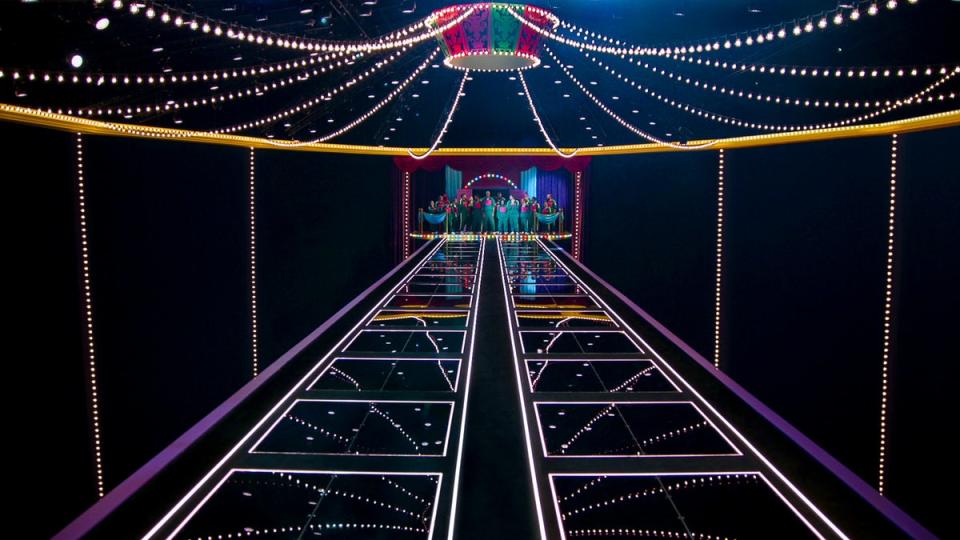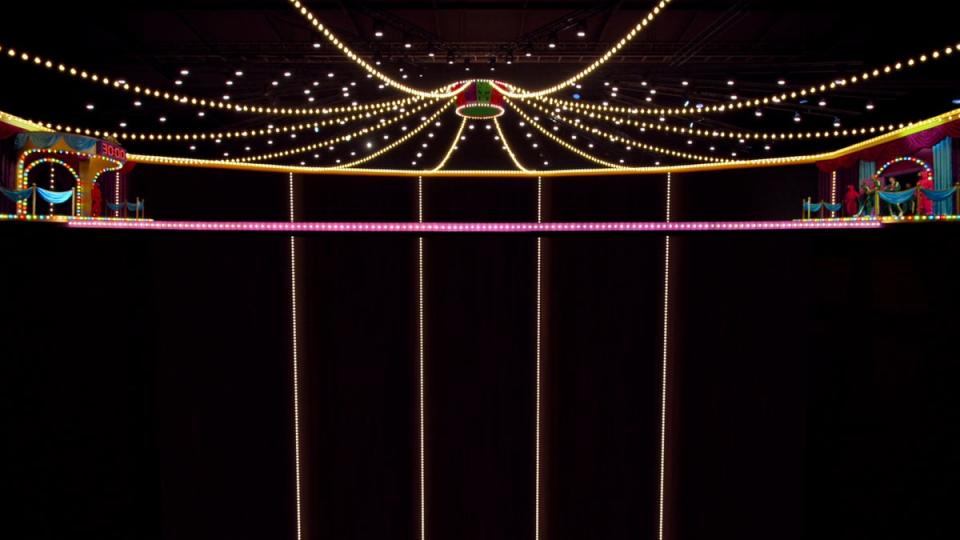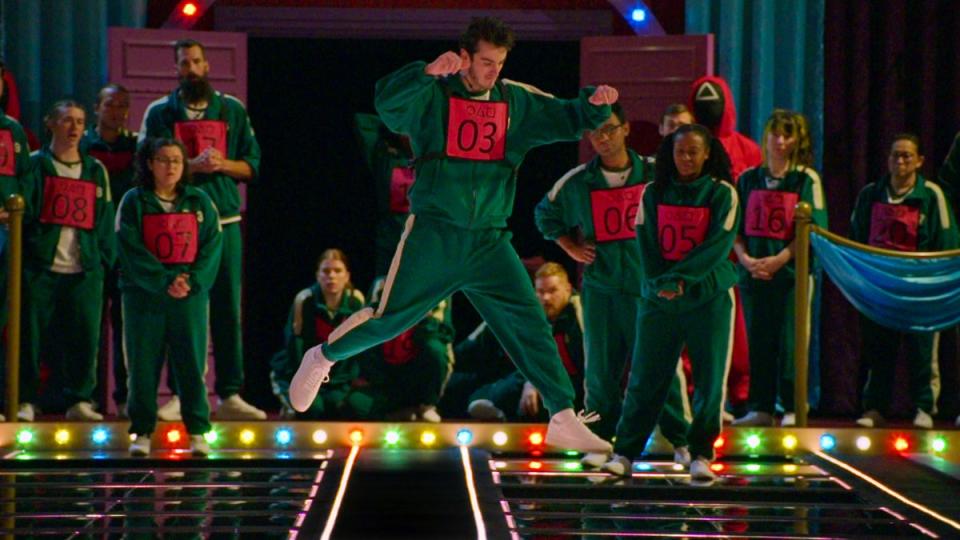Squid Game: The Challenge producers reveal secret detail behind Glass Bridge test
Producers of the new reality game show competitionSquid Game: The Challenge, have revealed a secret detail from the glass bridge challenge in episode seven of the series.
The Netflix show, based on the original 2021 South Korean drama, sees 456 contestants compete in a series of games and tests for the chance to win $4.56m (£3.55m) – the largest lump-sum jackpot in the history of reality TV.
Warning: Spoilers for episode seven of Squid Game: The Challenge follow
In episode seven, those 456 players have been whittled down to just 20 when they have to take on the glass bridge challenge, where contestants are faced with a challenge similar to the one that featured in the original Squid Game series.
In the fiction Squid Game series, the bridge was described as being made of two types of identical-appearing glass panels – one made of thin, normal glass, and the other of tempered glass. Players have to cross the glass bridge, but those who land on the regular glass would fall 30 feet to their deaths and be eliminated from the game.
However, Squid Game: The Challenge had to evoke the same sense of anxiety in its players, but without putting them at physical risk. In episode seven of the series, players who step on the regular glass panels fall through a trap door and plummet 30 feet into the darkness below the bridge.
In a new interview with Tudum, Netflix’s executive producers Toni Ireland, John Hay, and Stephen Yemoh have revealed the secrets behind the glass bridge challenge in the reality show, and whether players really fell through the trap doors, and if so, what they landed on.
According to Ireland, stunt actors were used to perform the fall, instead of the contestants themselves, to create continuity with the appearance of the original series.
Instead, each door was made of Perspex, a type of clear acrylic – each designed to withstand the weight of each contestant.

Ireland said the production team watched the game play out behind the scenes, and each time a player stepped forward, a message over the loudspeaker would alert them as to whether they’d passed or failed. They would then step aside for the stuntperson to physically perform the fall. The stunt actor would then fall from 16 feet high and land on a six-foot-tall airbag positioned underneath. The rest of the “falling” motion that you see on screen was created with special effects.
“The ‘fall’ through the trapdoor was done by a stuntperson,” Hay said. “That fall takes specialist skills. We took the care and safety of our players incredibly seriously, so we shot as much as we possibly could with them, then, at the very last minute, we swapped them out for the stunt performers. The stuntperson shot and VFX [visual effects] is used for just that fall moment.”

“The [players’] reactions are all genuine,” Ireland told Tudum. “Even though there was a little bit more process than what you see on screen, the emotions are still real. They’ve just seen their friend eliminated. They then have a difficult decision to make in order to stay in the game.”
In the episode, right before TJ (Player 182), who’s been assigned to go first, makes the initial step onto the bridge, Roland (Player 418) suggests everyone should take one step.
So, in theory, if the first player chooses the correct stepping stone, the second player in line should overtake them. Then, the third player in line should overtake both of them and make the next choice, ensuring that everyone would have a 50:50 chance at survival.

However, things became tense when Ashley (Player 278) disagreed and said she would not overtake Trey (Player 301), who was essentially forced to take another jump because Ashley refused to. Many of her fellow players seemed miffed by Ashley’s decision not to get on board with the team’s collective plan-of-action.
“They came up with a plan, but it was never totally agreed [upon],” Yemoh said. “It was spoken about, and it seemed like some people were up for it, but it was never set in stone. That’s what made that moment between Trey and Ashley quite complicated… She didn’t agree to do it. She didn’t make Trey jump [forward], but at the same time, she didn’t offer to leapfrog him like Marina did (and Marina was eliminated because of it).”
“Some would say she was in the wrong for doing what she did, but some would say it’s her prerogative to strategise,” Yemoh said.
Meanwhile, it was reported shortly after the launch of the series, that several contestants have threatened Netflix with a lawsuit over “injuries” they allegedly incurred while filming the show.
Express Solicitors, the firm representing the contestants, said in a statement shared on their website that it had sent letters of claim to Studio Lambert, which co-produces the show alongside Netflix. The contestants claim the injuries occurred while filming the first game of the series, “Red Light, Green Light”, at Cardington Studios, a former Royal Air Force base in Bedford, while temperatures plummeted to -3C.
The first nine episodes of Squid Game: The Challenge are out now on Netflix. Find out when the season finale airs here.


